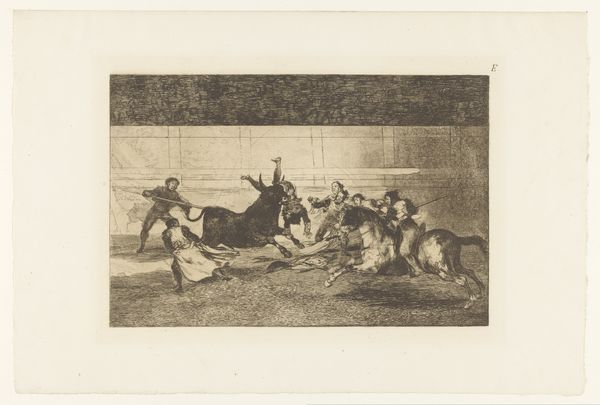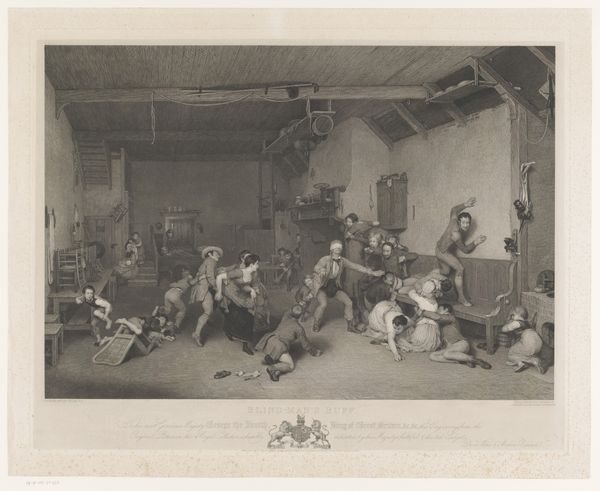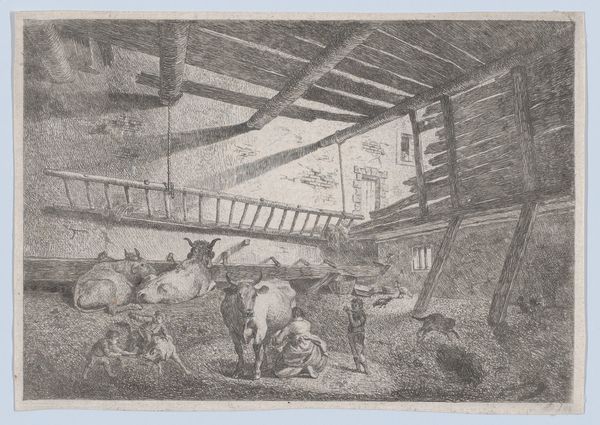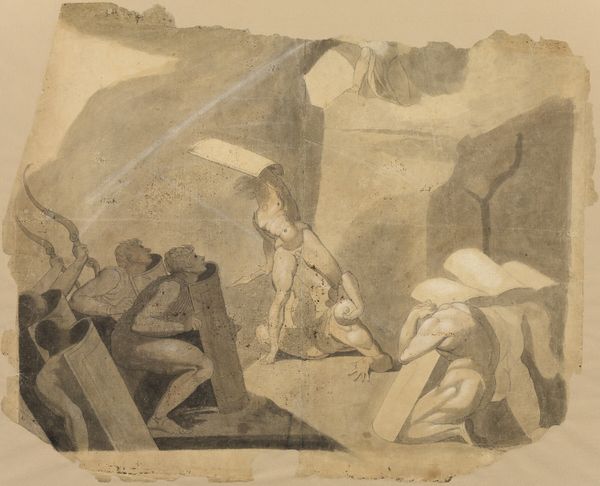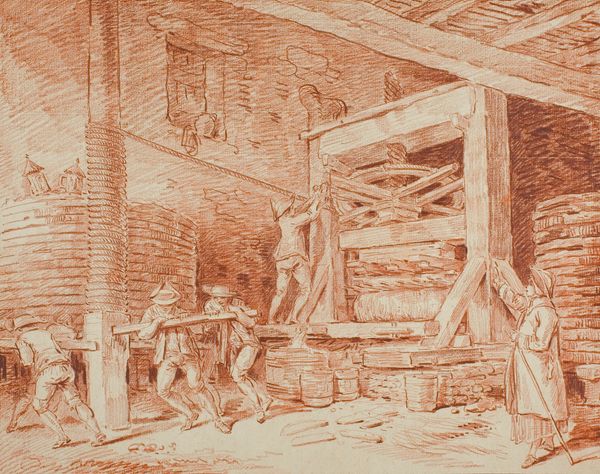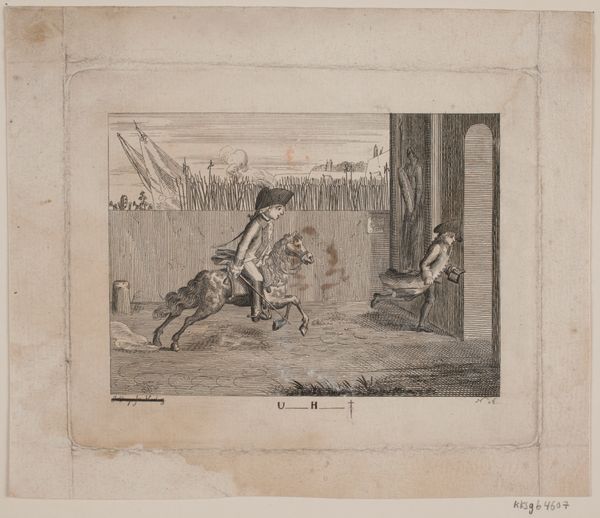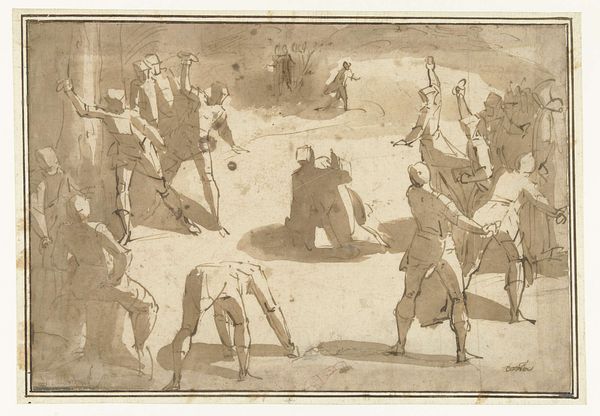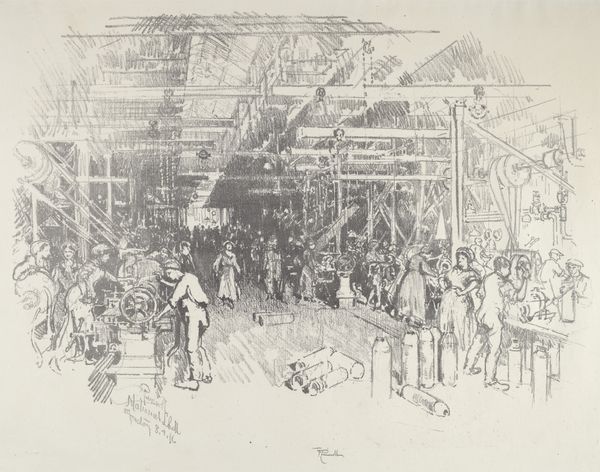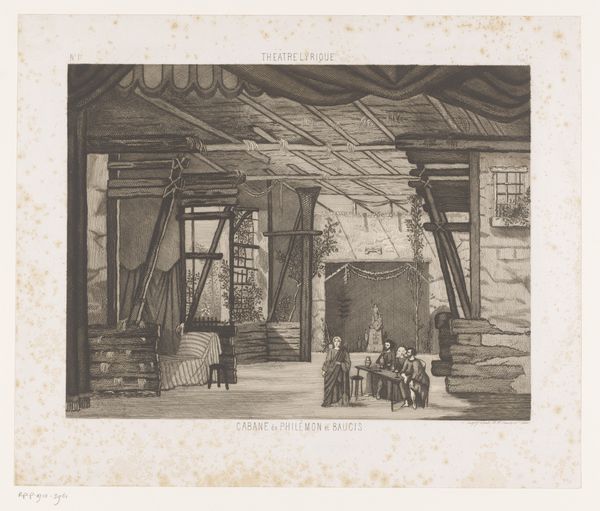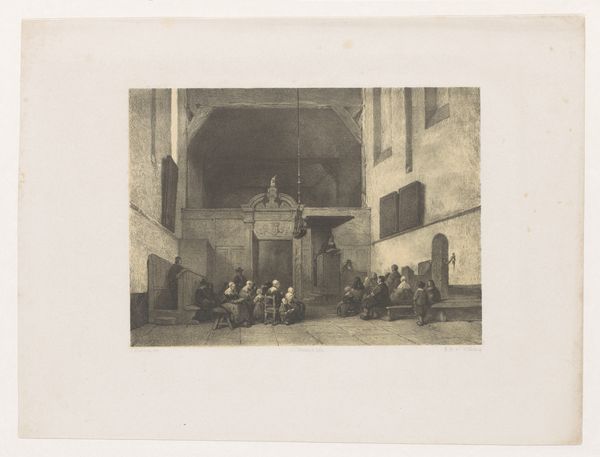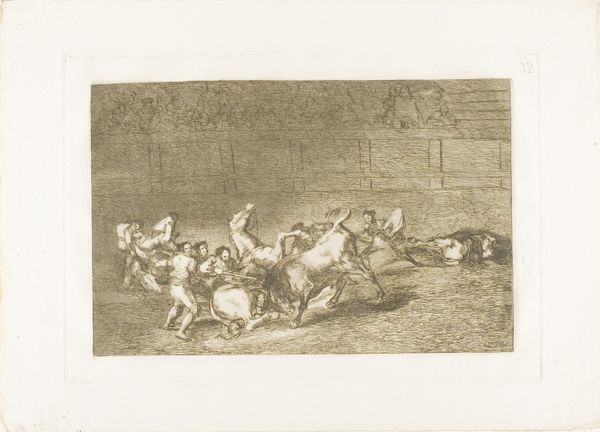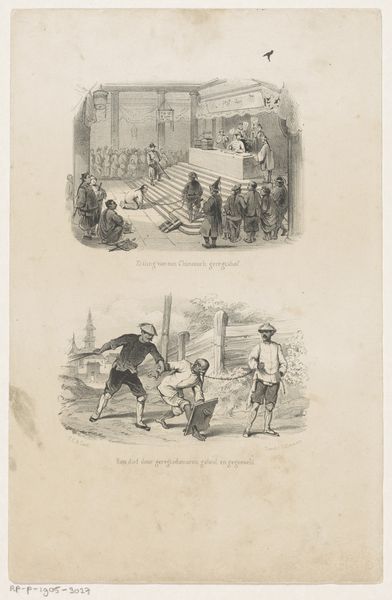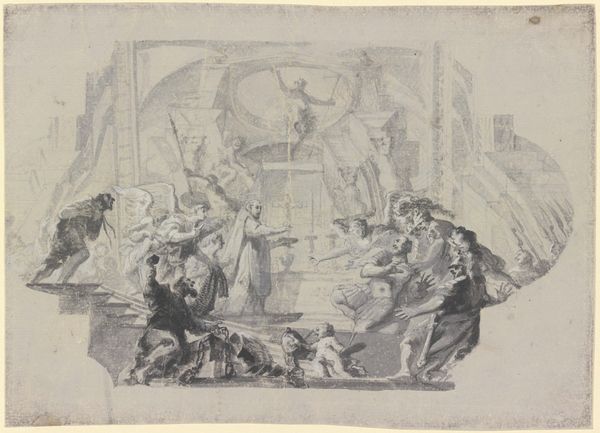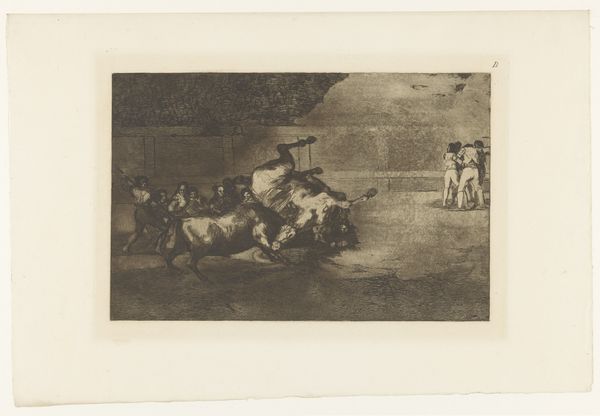
View of the Interior of One of the Tanks on Board the Great Eastern 1865 - 1866
0:00
0:00
drawing, print
#
drawing
#
toned paper
#
water colours
# print
#
possibly oil pastel
#
oil painting
#
underpainting
#
men
#
painting painterly
#
watercolour bleed
#
watercolour illustration
#
mixed media
#
watercolor
Dimensions: Sheet: 10 1/2 × 14 3/4 in. (26.6 × 37.5 cm)
Copyright: Public Domain
Editor: So, here we have Robert Charles Dudley's "View of the Interior of One of the Tanks on Board the Great Eastern," dating from 1865-1866. It appears to be watercolor and gouache on toned paper, currently housed at the Met. What strikes me is how it captures the almost brutal atmosphere of labor, this enclosed space filled with men pulling on ropes. What do you see in this piece? Curator: This work really highlights the often-overlooked labor and materiality inherent in grand industrial projects. Forget the romance of engineering; Dudley focuses on the social context – the men, the 'hands' that built this monumental ship. It seems the medium echoes the subject - think of the rough quality of watercolor and gouache, its inherent earthiness on toned paper to speak volumes about the grit and grime involved. Editor: That's a compelling take! So, you're saying the *way* it’s made connects directly to what it depicts? The choice of materials, almost a commentary? Curator: Precisely! The artist doesn't glorify the technological marvel of the Great Eastern. Instead, the use of humbler media acknowledges the intensive manual labor required. We see bodies working in near darkness and being part of a colossal effort. In looking closer, how do you think he used materials to portray their physical exertion? Editor: The subdued palette really emphasizes the lack of light and the overwhelming presence of the tank itself. The tonal range isn't dramatic; it feels very contained, claustrophobic almost. Curator: Exactly! And this brings us to another point – think about the production of watercolor paints and paper at the time, and how industrialization had made them more widely available. The accessibility of these materials enabled artists to document aspects of labor and industrial production more directly. Dudley’s choice wasn’t arbitrary but rooted in what was at hand, readily available and relevant to depicting labor and rapid production. Editor: I never thought about it like that, framing the materials as part of a larger system of production! So it's about bringing what's usually behind the scenes to the forefront, both in subject and material? Curator: Exactly. The image becomes less about celebrating industrial achievement, and more a document of the conditions and consumption of labor necessary to bring it to fruition. Editor: I see that now. It makes me rethink how I view the artwork; I am definitely considering the socio-economic context that has shaped the scene, which goes beyond aesthetics alone. Thank you for the different perspective!
Comments
No comments
Be the first to comment and join the conversation on the ultimate creative platform.
